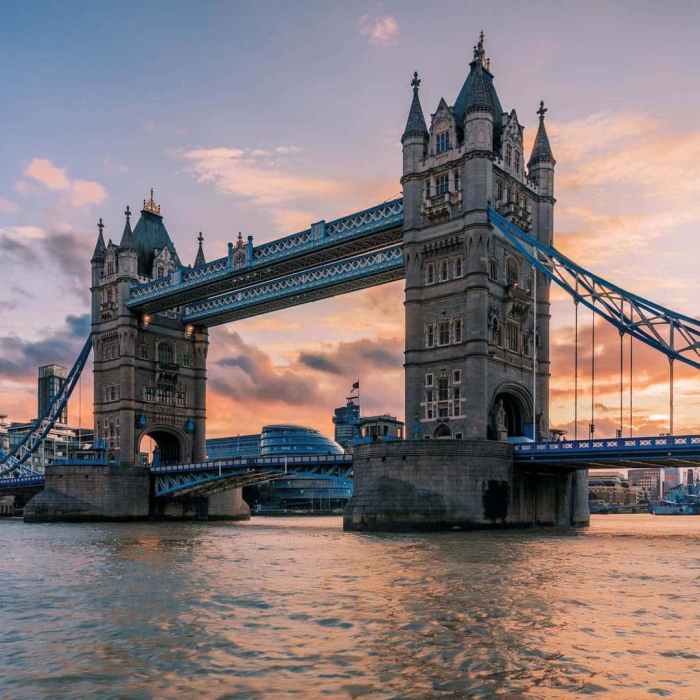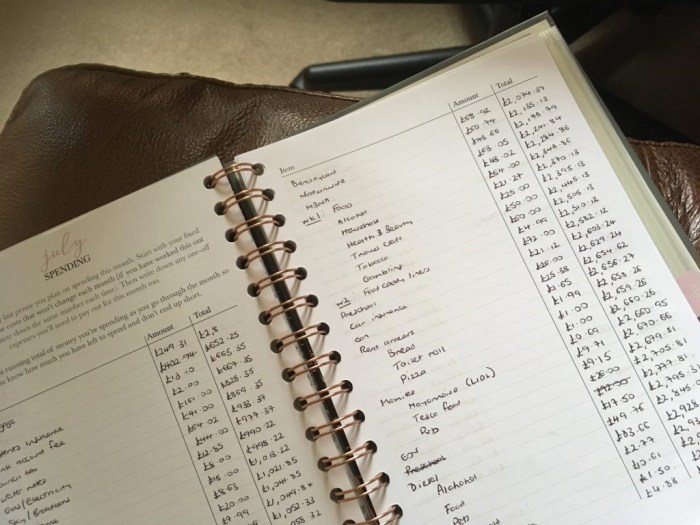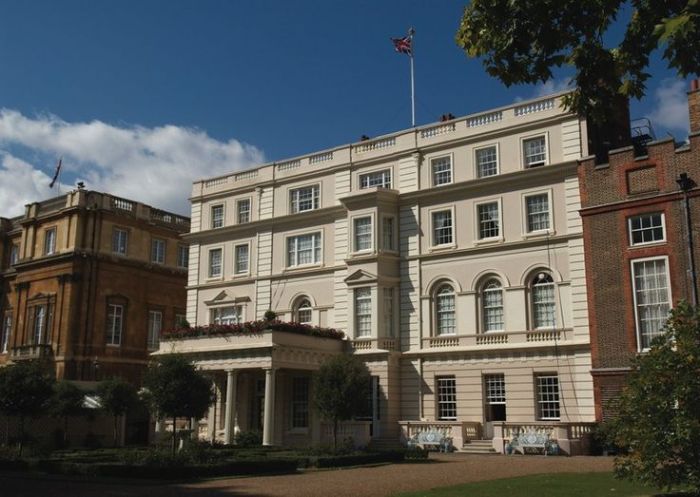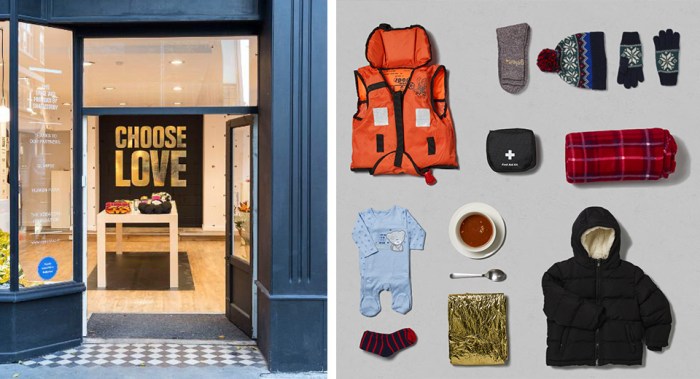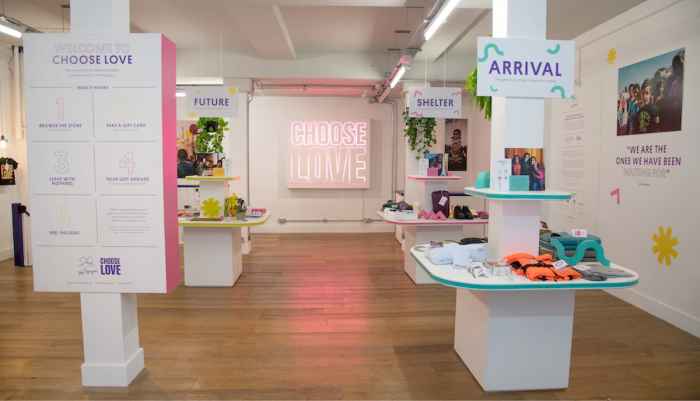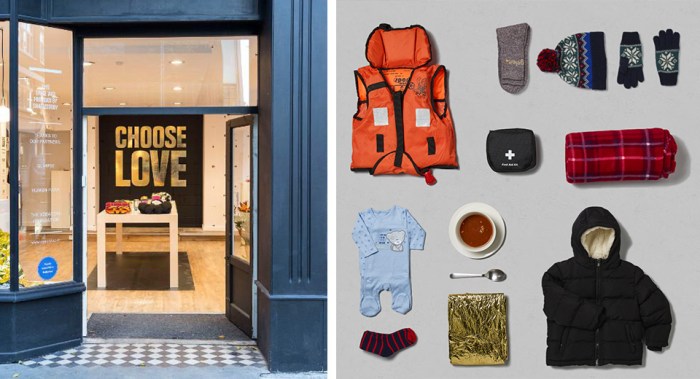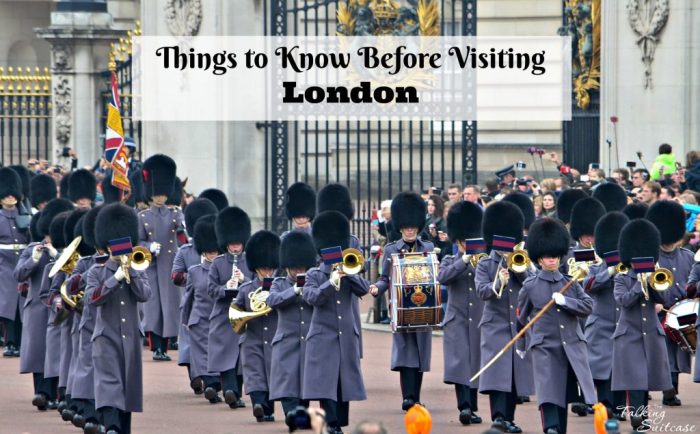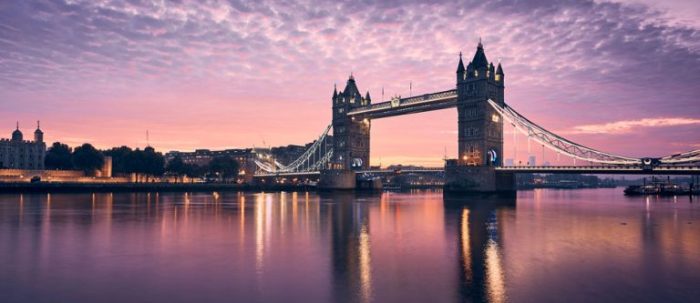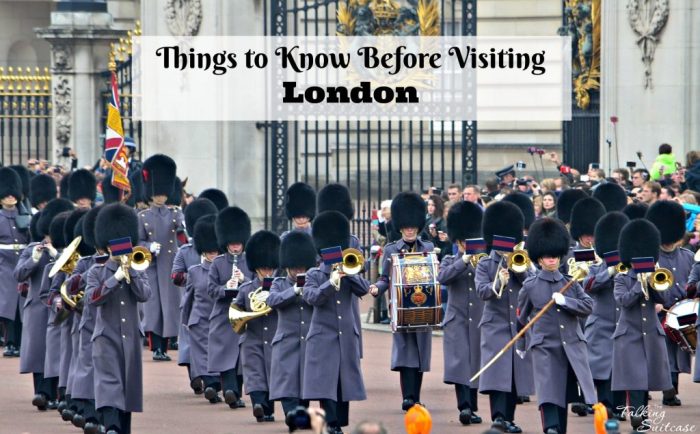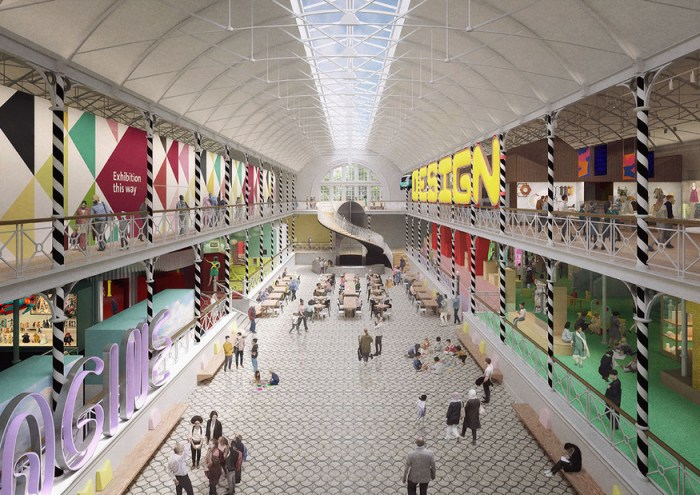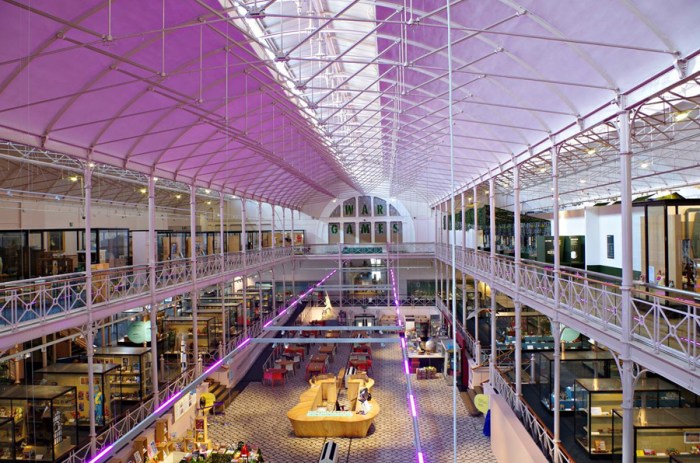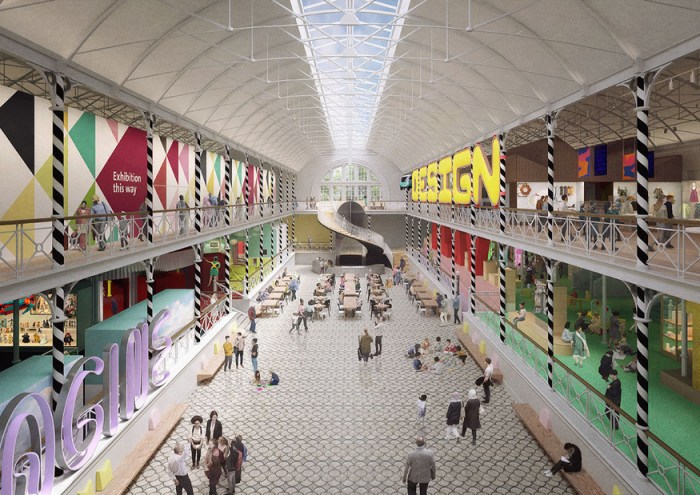London through the ages architectural insights into the capitals history – London through the ages: architectural insights into the capital’s history offers a captivating journey through the city’s evolution. From the Roman foundations of Londinium to the modern skyscrapers that pierce the sky, each era has left its mark on the city’s architectural landscape. We’ll explore the styles, influences, and iconic structures that have shaped London’s unique character, revealing the stories hidden within its buildings.
This exploration delves into the architectural evolution of London, spanning centuries of change. We’ll examine the key architectural styles from Roman times to the present day, highlighting the impact of various historical periods on the city’s built environment. Discover how the city’s iconic landmarks and public spaces reflect societal and cultural shifts throughout history.
Early London
London’s rich history is deeply intertwined with its architectural evolution. Tracing the city’s development through the ages reveals fascinating insights into the societal shifts, technological advancements, and cultural influences that shaped its unique character. This exploration begins with the Roman foundations, a pivotal period that laid the groundwork for the city we know today.The Roman settlement of Londinium, established around the first century AD, wasn’t merely a military outpost; it was a bustling trading centre and administrative hub.
The Romans, renowned for their engineering prowess, brought with them a sophisticated urban planning philosophy that profoundly impacted the city’s layout and infrastructure. This planning, evident in the grid pattern of streets and the construction of public buildings, contrasted with the more organic growth patterns often seen in earlier settlements.
Roman Urban Planning
The Romans implemented a highly structured urban design in Londinium, reflecting their efficient administrative approach. The city’s layout, featuring rectilinear streets and a central forum, facilitated trade, communication, and governance. This grid-based system, though modified over time, is still visible in the modern London street plan. The Romans understood the importance of efficient urban circulation and public spaces, creating a foundation for future urban development.
Key Building Materials and Techniques
The Romans employed a range of construction materials, including timber, brick, and stone, often in combination. Timber was frequently used for framing and roofing, while brick and stone were employed for foundations, walls, and pavements. Mortar, a crucial component in stone construction, allowed for the creation of strong and durable structures. Roman builders excelled in techniques like concrete construction, a revolutionary material that enhanced structural integrity and allowed for innovative architectural forms.
Their mastery of engineering principles and their access to diverse materials allowed for the creation of public buildings and residential structures.
Evolution of Londinium
The settlement evolved from a small trading post to a significant Roman city. Early settlements were likely composed of timber-framed houses, organized around the river Thames. Gradually, more substantial structures emerged, incorporating stone and brick. The growth of Londinium paralleled the expansion of the Roman Empire, showcasing the city’s increasing importance as a hub for commerce and administration.
The development of public baths, temples, and other civic structures indicated the rising status of the city.
Impact on Later London Developments
Roman architecture profoundly influenced later London developments. The use of grid patterns in street layouts, the employment of durable building materials, and the construction of public spaces are clear legacies of the Roman occupation. These principles continued to shape the city’s urban fabric for centuries after the Romans left.
Comparison to Contemporary European Cities
| Feature | Londinium | Other Contemporary European Cities (e.g., Cologne, Lyon) |
|---|---|---|
| Street Layout | Grid pattern | Varied, often more organic |
| Building Materials | Timber, brick, stone, concrete | Timber, stone, local materials |
| Public Structures | Forum, baths, temples | Public spaces, amphitheaters |
| Urban Planning | Efficient and structured | Varying levels of planning |
The table above highlights some key distinctions between Londinium and other Roman cities in Europe. While many shared characteristics, Londinium’s particular location and role as a major trading centre shaped its specific architectural and urban planning features.
Medieval London
Medieval London, a period spanning roughly from the Norman Conquest to the Tudor era, witnessed significant architectural growth and change. The city, already a bustling centre of trade and commerce, experienced a period of expansion, driven by both population increase and evolving societal needs. The introduction of new architectural styles and construction techniques profoundly shaped the urban landscape.The Norman Conquest in 1066 had a profound impact on London’s architectural development.
Norman builders brought with them their own style, characterized by strong, imposing structures. This style, blending Romanesque elements with local traditions, laid the foundation for subsequent developments. As London grew, the Gothic style, with its pointed arches and intricate tracery, gradually gained prominence, influencing religious and secular architecture alike. These stylistic shifts are evident in the city’s evolving structures.
Architectural Styles and Influences
The Norman and Gothic architectural styles profoundly influenced the structures of medieval London. Norman buildings, characterized by their massive, rounded arches and thick walls, often served defensive purposes. Examples of this style can still be found in some remaining castles and fortified structures, though the majority of these have been rebuilt or significantly altered over time. The Gothic style, emerging later, introduced innovative techniques, resulting in lighter, more ornate buildings.
These features, like pointed arches and ribbed vaults, are particularly evident in religious architecture.
Religious Architecture
Religious architecture played a central role in medieval London’s identity and social life. Monasteries and cathedrals, constructed with intricate detail and grandeur, reflected the city’s piety and the power of the Church. The construction of these buildings required significant resources, and they were often sites of artistic innovation, showcasing the best craftsmanship of the time. Cathedrals, like Canterbury Cathedral, served as important pilgrimage destinations, further emphasizing their significance in the city’s social and spiritual fabric.
Exploring London’s architecture offers fascinating glimpses into its history. From ancient Roman foundations to the modern skyscrapers, each building whispers tales of bygone eras. Planning a weekend getaway to experience the vibrant energy of New York City? Weekend getaways weekend in new york can be a great way to recharge. Ultimately, delving into London’s architectural heritage is a rewarding journey through time.
Types of Buildings
Medieval London boasted a diverse range of buildings, reflecting the city’s evolving social structure and economic activities. Houses, shops, and guildhalls were essential components of the urban landscape. Houses varied in size and complexity, reflecting the social standing of their occupants. Shops, often located along the main thoroughfares, catered to the growing commercial activity. Guildhalls, the meeting places for trade guilds, showcased the city’s intricate social and economic networks.
Construction Techniques and Materials
Medieval London’s builders employed various construction techniques and materials. Stone was a prevalent material, used for both large structures and smaller buildings. Timber was another crucial material, particularly for houses and smaller buildings. Mortar was used to bind stones together, and the quality of mortar and other building materials varied depending on the availability of resources and the level of skill of the craftsmen.
Construction techniques evolved over time, reflecting advancements in knowledge and technology. Advanced techniques, like the use of pointed arches and ribbed vaults in Gothic architecture, marked a significant leap in building practices.
Medieval London Houses
| Type of House | Characteristics |
|---|---|
| Small, residential houses | Often made of timber-framed construction, with wattle-and-daub infill, and a thatched roof. These houses typically had one or two rooms and were common for lower-income residents. |
| Large, merchant houses | Constructed from stone or timber-framed structures with more elaborate features. These houses often had multiple rooms, yards, and even small gardens. They reflected the affluence of the merchants and traders who occupied them. |
| Tower houses | Often built with stone, designed for defense and showcasing the owner’s wealth and status. These structures were commonly used for fortified living spaces and demonstrated a heightened sense of security. |
Renaissance and Baroque London
London, during the Renaissance and Baroque periods (roughly 16th to 18th centuries), underwent a significant transformation, not only in terms of population growth but also in architectural style. This period saw a shift from the medieval aesthetic to a more refined and elaborate approach, influenced by the burgeoning artistic and intellectual movements of the time. The grandeur and sophistication of the era are reflected in the architecture that continues to shape the city’s skyline today.The architectural trends of the Renaissance and Baroque periods in London were heavily influenced by Italian and French styles, reflecting the burgeoning trade and cultural exchange between these countries.
These influences manifested in the use of classical orders, symmetry, and elaborate ornamentation. Simultaneously, local traditions and practical considerations adapted these styles to the unique context of the city, creating a distinctive London identity within these broader European trends.
Architectural Trends and Influences
The Renaissance saw the revival of classical forms, including columns, arches, and domes, which were integrated into new buildings. This period also saw the introduction of symmetrical facades and the use of brick and stone in more elaborate ways. Palladianism, a style popularized by Andrea Palladio, exerted a strong influence on English architecture, particularly in country houses, but also in some London townhouses.
This approach emphasized symmetry, proportion, and the use of classical motifs.
Key Buildings Constructed
Numerous significant buildings were erected during this period, each showcasing the evolving architectural trends.
- St. Paul’s Cathedral, while not entirely built during this period, underwent significant reconstruction by Sir Christopher Wren in the Baroque style, demonstrating a monumental example of the era’s grand scale.
- Many of the townhouses and mansions constructed in the City of London and Westminster reflected the growing wealth and influence of the merchant class and aristocracy, showcasing the Renaissance and Baroque styles in their facades and interiors.
- In addition to churches and houses, public buildings and institutions, such as the Royal Exchange and various courts of law, were also built or significantly remodelled.
Role of Prominent Architects
The role of architects was crucial in shaping the London skyline during this period.
Exploring London’s architecture reveals a fascinating journey through time, showcasing the city’s evolution. From Roman ruins to modern skyscrapers, each building whispers tales of the capital’s history. For a different perspective on historical journeys, consider the migratory patterns of gray whales along the Pacific coast, and how they’ve adapted to their environment over the millennia. Gray whale spotting Pacific coast offers insights into these majestic creatures’ lives, highlighting the incredible diversity of life on Earth.
Ultimately, London’s architectural story continues to inspire, demonstrating the enduring human spirit throughout the ages.
- Sir Christopher Wren, a prominent architect of the Baroque period, played a pivotal role in London’s architectural development, especially with his rebuilding of St. Paul’s Cathedral following the Great Fire of London.
- Other architects of the time, such as Inigo Jones, contributed to the adoption of Renaissance styles in London, leaving a visible mark on the city’s buildings.
Evolution of Urban Planning and Public Spaces
The development of urban planning and public spaces saw changes in London during this period.
- The Great Fire of London, though a devastating event, presented an opportunity for significant urban planning reform, including the development of wider streets and improved fire safety measures. Wren’s involvement in the rebuilding was pivotal in this process.
- The expansion of the city’s boundaries and the construction of new streets and squares reflect the increasing population and the need for more public spaces.
Comparison of Architectural Styles
| Feature | Renaissance | Baroque |
|---|---|---|
| Style | Revival of classical forms, symmetrical facades, use of classical motifs | Elaborate ornamentation, grandeur, dramatic use of space, asymmetry |
| Ornamentation | Classical, restrained | Rich, elaborate, often sculpted |
| Scale | Often proportionate to the surroundings | Monumental, often aiming for grandeur |
| Space | Balanced, symmetrical | Dramatic, dynamic, often asymmetrical |
Georgian and Victorian London
London, in the Georgian and Victorian eras, underwent a dramatic transformation. The Industrial Revolution profoundly reshaped the city’s landscape, economy, and social fabric. This period witnessed an unprecedented surge in population and the rise of new architectural styles reflecting the changing times. From grand townhouses to imposing factories, the architecture of this era speaks volumes about the era’s technological advancements, social hierarchies, and cultural values.The impact of industrialization was profound.
The burgeoning factories and workshops demanded new housing for the growing working class, while the wealthy sought grand residences to showcase their status. This led to a dynamic interplay of architectural styles and functions. The relentless pace of urban expansion required innovative construction techniques and materials to meet the ever-increasing demand for housing, infrastructure, and commercial spaces.
Impact of Industrialization on London’s Architectural Landscape
Industrialization profoundly altered London’s architectural landscape. The demand for housing, factories, and infrastructure skyrocketed. New construction methods, materials, and architectural styles emerged to meet these demands. This period saw the rise of utilitarian buildings, such as factories and warehouses, alongside grand mansions and civic structures. The resulting mix of styles reflected the social and economic divisions of the time.
Key Features of Georgian and Victorian Architecture
Georgian architecture, preceding the Victorian era, was characterized by its symmetrical facades, elegant proportions, and use of classical elements like columns and pediments. Victorian architecture, in contrast, embraced a wider range of styles, from the Gothic Revival to the ornate Queen Anne style. The grandeur and opulence of Victorian buildings often reflected the growing wealth and ambition of the era.
Exploring London’s architectural evolution is fascinating, revealing so much about the city’s past. From medieval stone structures to modern marvels, each building whispers tales of London’s history. And if you’re seeking a unique getaway, consider a stay at a luxurious ranch like Smith Fork Ranch Colorado all inclusive , offering a completely different kind of historical experience in the American West.
These experiences provide a contrasting perspective, yet both highlight fascinating stories through architecture.
Elaborate detailing, intricate ornamentation, and a focus on creating imposing structures were key features.
Building Materials and Construction Methods
The availability of new building materials, such as cast iron and steel, profoundly impacted construction techniques. These materials allowed for the creation of taller and more complex structures. Iron and steel became essential components in the design of bridges, railway stations, and industrial buildings. Brickwork, though still prevalent, was combined with new materials to create more resilient and durable structures.
Social and Cultural Factors Influencing Architecture
The social and cultural landscape heavily influenced the architecture of the period. The burgeoning middle class sought residences reflecting their newfound status. The rising industrialists commissioned grand houses and factories to demonstrate their wealth and power. The growing population and changing social structures shaped the design and layout of urban spaces. Architectural styles mirrored the aspirations and anxieties of the time.
Architectural Styles in Georgian and Victorian London
| Architectural Style | Key Features | Examples |
|---|---|---|
| Georgian | Symmetry, classical elements, elegance, brickwork, symmetrical facades. | Many townhouses in central London, some government buildings. |
| Victorian Gothic Revival | Sharp spires, pointed arches, stained glass, elaborate details, inspired by medieval architecture. | Houses of Parliament, churches, and other public buildings. |
| Victorian Italianate | Rounded arches, terracotta, decorative elements, symmetrical facades. | Residential houses and commercial buildings. |
| Victorian Queen Anne | Asymmetrical facades, decorative details, turrets, and ornateness. | Residential houses across London, often with decorative gables. |
| Victorian Ironwork | Industrial use of cast iron and steel in bridges, railway stations, and factories. | London Bridge, railway stations, factory buildings. |
Modern London
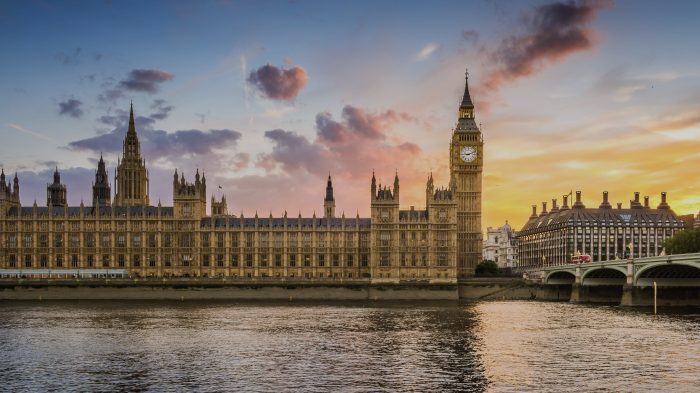
London, a city steeped in history, continues to evolve, embracing the 20th and 21st centuries with architectural styles that reflect its dynamic spirit. Modern developments have sought to balance innovation with the city’s rich past, creating a unique blend of tradition and contemporary design. From iconic skyscrapers to revitalized neighbourhoods, London’s modern architecture tells a story of resilience, progress, and adaptation.The evolution of architectural styles in 20th and 21st-century London is a fascinating journey.
Early modernism, characterized by clean lines and functional forms, gave way to a diverse range of approaches, including high-tech designs, postmodern interpretations, and sustainability-focused constructions. These trends reflect broader societal shifts, technological advancements, and a growing awareness of environmental responsibility.
Evolution of Architectural Styles
The 20th century witnessed a shift away from traditional styles towards more modern and functional approaches. Early examples, like the iconic Brutalist structures, demonstrated a desire for innovative materials and forms. Later, high-tech architecture emerged, emphasizing the use of glass, steel, and other advanced materials, showcasing a distinct aesthetic. Postmodernism, with its playful mix of historical references and contemporary elements, also left its mark.
The 21st century has seen a growing emphasis on sustainability, with green building principles influencing designs and the use of environmentally friendly materials becoming increasingly common.
Key Trends in Modern London Architecture
Several key trends define modern London architecture. A notable trend is the integration of sustainable design principles, reflecting a global concern for environmental protection. Another is the increasing use of advanced materials and technologies to create more efficient and aesthetically pleasing structures. Furthermore, a focus on creating adaptable and flexible spaces has become prevalent, reflecting the changing needs of a dynamic city.
Finally, there is a renewed appreciation for the historical context of London, with modern buildings often designed to complement, rather than overshadow, the city’s existing architecture.
Significant Buildings and Architectural Projects
Numerous significant buildings and projects have shaped the modern architectural landscape of London. The Shard, a striking glass skyscraper, exemplifies the city’s ambition to reach for the sky. The Tate Modern’s innovative conversion of a former power station showcases a brilliant example of adaptive reuse, integrating modern functionality with historical context. Similarly, the redevelopment of Docklands, transforming a former industrial area into a vibrant mixed-use district, exemplifies the integration of new construction with existing urban fabric.
These projects demonstrate a commitment to both architectural innovation and the preservation of London’s historical identity.
Use of New Materials and Technologies
Modern London architecture frequently employs advanced materials and technologies. The use of lightweight steel and reinforced concrete allows for the creation of taller and more complex structures. The widespread adoption of glass facades enhances natural light penetration, creating a brighter and more inviting interior environment. Furthermore, advancements in construction techniques, such as prefabrication and modular design, are accelerating the building process while promoting efficiency.
These developments not only enhance the aesthetic appeal of buildings but also contribute to their functionality and sustainability.
Integration of Modern Designs with Historical Context
Modern designs in London often acknowledge and integrate with the city’s rich historical context. Many new buildings are carefully positioned to complement existing structures, creating a harmonious blend of old and new. Restoration and renovation projects are also undertaken to preserve historical buildings while incorporating modern amenities and designs. This integration of old and new, tradition and innovation, is a hallmark of London’s architectural identity.
Modern designs are not imposed upon the city; rather, they are integrated into the fabric of London, creating a living tapestry of architectural styles that tells the story of its continuous evolution.
London’s Architectural Icons
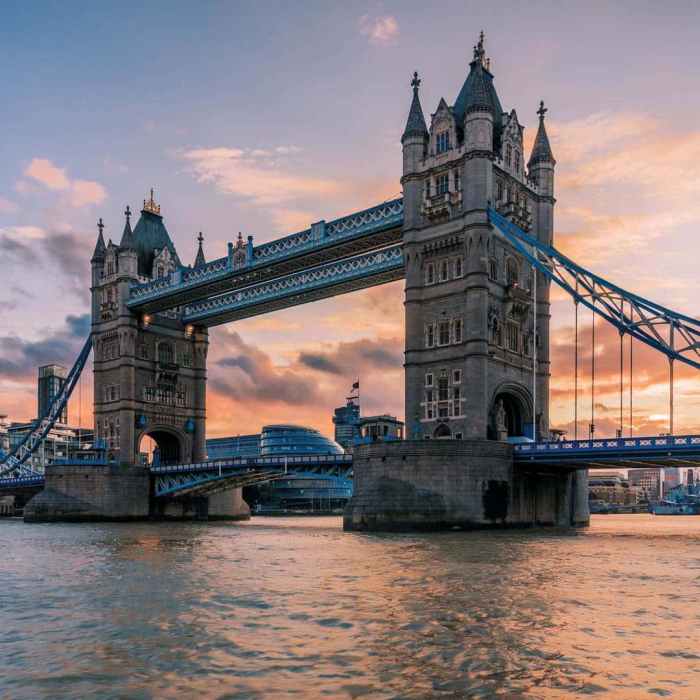
London’s architectural tapestry is a vibrant reflection of its historical evolution. From the humble beginnings of Roman settlements to the soaring skyscrapers of the modern era, each landmark whispers tales of the city’s past and present. This exploration delves into the iconic structures that define London’s identity, examining their design, historical context, symbolism, and enduring influence.Iconic landmarks stand as testaments to the ingenuity, ambition, and changing aesthetics of successive generations.
Their design often reflects the prevailing social, political, and economic conditions of their time, and they continue to shape the city’s identity and appeal to visitors and residents alike. The enduring presence of these buildings speaks to their significance in shaping London’s story.
Architectural Features of Iconic Landmarks
London’s architectural icons showcase a remarkable range of styles, each reflecting the distinct characteristics of the era in which they were built. From the grandeur of neoclassical structures to the intricate details of Gothic Revival designs, these buildings embody the artistic trends and technological advancements of their time. Their construction materials, structural innovations, and decorative elements offer insights into the cultural values and aesthetic preferences of past generations.
Historical Context Behind Iconic Landmark Design
Understanding the historical context surrounding the design of London’s landmarks is crucial to appreciating their significance. Each building was conceived within a specific historical and social framework, reflecting the political, economic, and cultural conditions of the time. Factors such as social movements, technological innovations, and prevailing artistic styles all contributed to the unique characteristics of each landmark. For example, the Great Fire of London in 1666 prompted a shift towards more fire-resistant materials and a renewed focus on urban planning, directly influencing the design of subsequent buildings.
Symbolism and Cultural Significance of Iconic Landmarks
These buildings often carry symbolic weight, reflecting the values and aspirations of the society that created them. The grandeur of Buckingham Palace, for example, symbolizes the power and prestige of the monarchy. Similarly, the intricate details of St. Paul’s Cathedral convey the profound religious faith and artistic skill of the era. These symbols connect the past with the present, serving as powerful reminders of London’s rich heritage.
Influence of Iconic Structures on London’s Identity
London’s architectural icons play a vital role in shaping the city’s identity. They serve as landmarks, attracting tourists and reminding residents of the city’s historical depth. Their presence contributes to the unique character of different neighborhoods, influencing the overall aesthetic and atmosphere. The iconic structures also inspire and influence modern architecture, serving as a testament to the enduring legacy of design.
Table of London’s Architectural Icons, London through the ages architectural insights into the capitals history
| Name | Image Description | Brief Description |
|---|---|---|
| Buckingham Palace | A grand, imposing structure with ornate facades and multiple courtyards. | The official London residence of the monarch. Its grand design reflects the power and prestige of the British monarchy. |
| St. Paul’s Cathedral | A magnificent cathedral with a soaring dome and intricate details. | A symbol of faith and resilience, rebuilt after the Great Fire of London, showcasing the era’s artistic and engineering prowess. |
| Tower of London | A historic castle with a tall, imposing structure and defensive walls. | A fortress with a long and storied history, serving as a royal palace, prison, and treasury. |
| Houses of Parliament | A neo-Gothic structure with a famous clock tower (Big Ben). | The seat of the UK’s legislative power, its design represents a return to medieval aesthetics. |
| The Shard | A modern skyscraper with a distinctive glass facade. | A contemporary icon of London’s skyline, showcasing modern architectural designs and engineering. |
London’s Public Spaces
London’s public spaces, from bustling squares to sprawling parks, have played a vital role in shaping the city’s identity and reflecting its evolving social and cultural landscape. These spaces, designed and redesigned over centuries, have accommodated changing needs and preferences, mirroring the ebb and flow of London’s history. From the grand avenues of the Georgian era to the modern urban gardens of the 20th and 21st centuries, each design tells a story.These spaces are more than just places to relax or gather; they are integral parts of the city’s fabric, reflecting the values and priorities of the communities that use them.
Their evolution reveals a dynamic relationship between urban planning, social attitudes, and architectural innovation.
Early London Public Spaces
Early London’s public spaces were often defined by necessity and practicality. Open spaces were primarily areas for trade, assembly, and, unfortunately, waste disposal. The River Thames itself was a crucial public space, used for transportation, commerce, and leisure activities. Early markets and gathering places, though lacking the grandeur of later periods, were the heart of community life.
Medieval London’s Public Spaces
The medieval period saw the development of more structured public spaces, though often with a strong emphasis on practicality and defense. Examples include the open spaces surrounding religious buildings, like the various cathedrals, and the common fields used for agriculture and grazing. The growth of the city led to the emergence of larger marketplaces, which became central to commerce and social interaction.
These spaces reflected the burgeoning middle class and the increased trade that characterized the era.
Renaissance and Baroque London’s Public Spaces
The Renaissance and Baroque eras introduced a new level of formality and grandeur to London’s public spaces. Royal palaces and courtyards became important public venues, hosting elaborate ceremonies and events. The design of these spaces emphasized symmetry, proportion, and decorative embellishments. The grandeur of these spaces mirrored the growing power and wealth of the monarchy and the burgeoning merchant class.
Georgian and Victorian London’s Public Spaces
The Georgian and Victorian periods witnessed a significant shift in the design and function of London’s public spaces. The emphasis on public health and aesthetics led to the creation of formal gardens, squares, and parks. Regent’s Park and Hyde Park, for instance, were expanded and redesigned to meet the demands of a growing population. This period saw the rise of the pleasure garden, offering respite from the urban environment and a place for social interaction.
The development of public transport and infrastructure also contributed to the design and use of public spaces.
Modern London’s Public Spaces
Modern London continued the evolution of public spaces, embracing new ideas about urban design and functionality. The design of parks and squares began to incorporate elements of recreation, entertainment, and community engagement. Contemporary parks, such as the South Bank, often blend historical elements with modern architectural design, reflecting a desire for a dynamic and multi-faceted public realm. This period also witnessed the rise of public art installations and urban design projects, demonstrating a commitment to enhancing the aesthetic appeal and social value of public spaces.
London’s Architectural Icons in Public Spaces
London’s public spaces are often defined by iconic architectural features. These features range from the grand structures of government buildings to the smaller details of public art installations. These structures are not only visually striking but also play a crucial role in defining the character of the public space. For example, the National Gallery’s neoclassical facade contributes to the aesthetic appeal of Trafalgar Square, shaping the public’s perception of the space.
Architectural Conservation and Preservation in London: London Through The Ages Architectural Insights Into The Capitals History
London’s architectural heritage, spanning centuries, is a testament to its rich history. From grand palaces to humble terraced houses, each building tells a story. Preserving this legacy is crucial not only for historical understanding but also for the city’s identity and future. The intricate tapestry of London’s architecture deserves careful consideration and dedicated preservation efforts.London’s architectural fabric is a complex blend of styles, reflecting different eras and social changes.
This intricate tapestry of styles necessitates a nuanced approach to conservation. The preservation of these buildings requires meticulous planning, consideration of the historical context, and a deep understanding of the building’s material properties and construction methods.
Importance of Preserving Historical Architecture
Preserving London’s historical architecture is vital for several reasons. It allows future generations to understand and appreciate the city’s evolution, fostering a sense of connection to the past. The aesthetic value of these structures contributes to London’s unique character and attractiveness, enriching the city’s visual landscape. Furthermore, maintaining historical buildings can stimulate local economies through tourism and related businesses.
The preservation of these buildings also contributes to the cultural identity of London.
Methods Used for Conservation and Restoration
Conservation and restoration are complex processes that require a thorough understanding of the building’s history, structure, and materials. The techniques used depend on the specific needs of each building. Careful documentation of the building’s original state is essential for guiding the restoration process. This involves detailed surveys, photographs, and sometimes even 3D modeling. Traditional building materials and techniques are often employed, ensuring the building retains its authenticity and character.
Employing modern techniques like advanced structural analysis and material science allows for informed and sustainable solutions.
Challenges and Opportunities in Preserving London’s Built Heritage
Preserving London’s built heritage presents several challenges. Funding is often a significant constraint, requiring a coordinated effort from government, private organizations, and community groups. Finding skilled craftspeople knowledgeable in historic building techniques can be difficult, demanding specialized training programs and apprenticeships. Balancing the needs of preservation with modern requirements, such as accessibility and safety standards, is a delicate task.
However, there are also opportunities. Technological advancements in materials science and construction techniques can enhance preservation efforts. The growing public awareness of the value of historic buildings can drive greater support for conservation initiatives.
Role of Government and Private Initiatives in Conservation Efforts
The government plays a crucial role in setting guidelines and regulations for conservation, providing funding, and supporting training programs for professionals. Private initiatives, such as charitable trusts and heritage organizations, can supplement government efforts by raising funds, advocating for conservation, and undertaking restoration projects. Collaboration between government agencies, private sector organizations, and community groups is essential for the success of preservation projects.
A collaborative approach allows for diverse perspectives and ensures the preservation of London’s architectural heritage for future generations.
Case Studies of Successful Conservation Projects
| Project Name | Description | Challenges Overcome | Outcome |
|---|---|---|---|
| The restoration of the Barbican Centre | Renovation of the iconic Barbican complex, incorporating modern facilities while respecting the original architectural design. | Balancing the need for contemporary amenities with historical preservation. | Preserved the historical character of the complex while enhancing its functionality and appeal. |
| The conversion of the Grade II listed former brewery into residential apartments. | Transforming a historic brewery into modern apartments, maintaining its architectural significance. | Balancing the need for modern living spaces with historical preservation. | Successfully created new residential spaces that retained the building’s historic character and architectural value. |
| The refurbishment of the Victorian railway station. | Refurbishing a historic railway station to meet modern standards, while preserving its original design. | Integrating modern facilities with historical design elements. | Created a modern and functional railway station that honored its Victorian heritage. |
Final Summary
In conclusion, London’s architectural journey is a testament to human ingenuity and adaptation. From the enduring legacy of Roman foundations to the innovative designs of modern London, the city’s built environment tells a rich story of history, culture, and progress. This exploration has unveiled the fascinating interplay between architecture and time, leaving us with a deeper appreciation for the enduring beauty and significance of London’s architectural heritage.
